Jeff Jaskowiak has been making music for a very long time. This winter, he released the album “Jasko’ Filisko & Ortega: Friendship”. Built around a range of long standing sonic styles (acoustic rhythm, freeform jazz, etc.) the album is a fresh and inspiring light in this time of Covid. This week, The COMP Magazine caught up with Jaskowiak at the DARA studio to discuss the alum, his music background, the role collaboration plays in his sonic practice, and the how all of these experiences have provide a wealth of knowledge to pass on to his students.
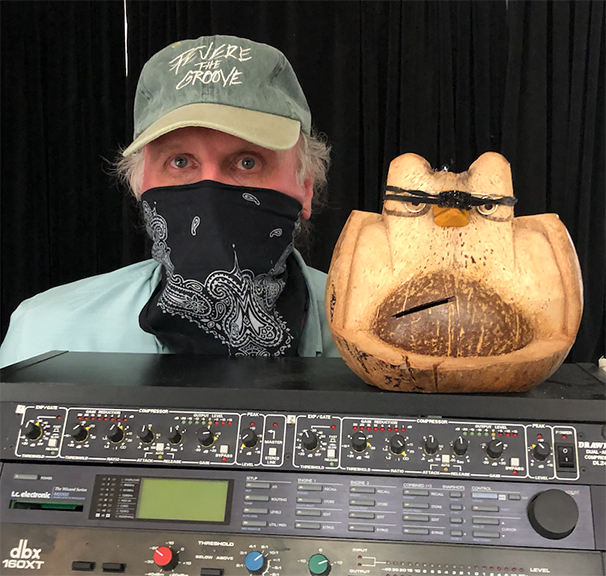
I am interested in discussing the longevity of your sonic practice. Can we start with how you were introduced to music?
I started playing guitar with my cousins and friends when I was ten. I have been bitten since then. My cousin and I started recording with cassette recorders from those early days making silly radio shows and recording our band rehearsals. I had a musical extended family with two uncles that played in bands and my parents that loved to dance. There was always music at our gatherings.
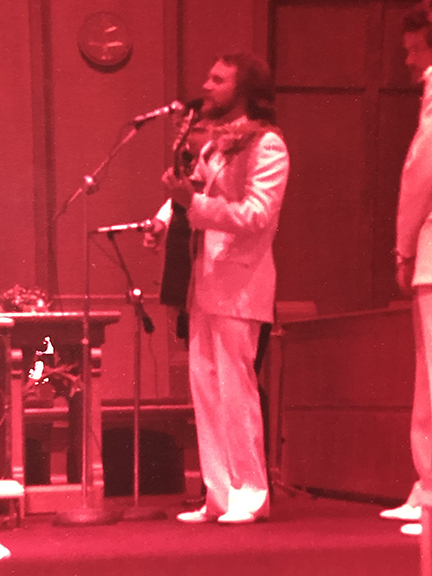
Was there a specific individual or person who you admired that prompted you to dedicate your life to music
In a weird way my Dad was my initial inspiration. He hated his job. I didn’t want to hate my job, so I practiced like crazy so I could have a chance in the music world. Also my neighborhood was a bit rough with guys just a few years older who caused trouble and getting in fights. So I hid away learning to play music.
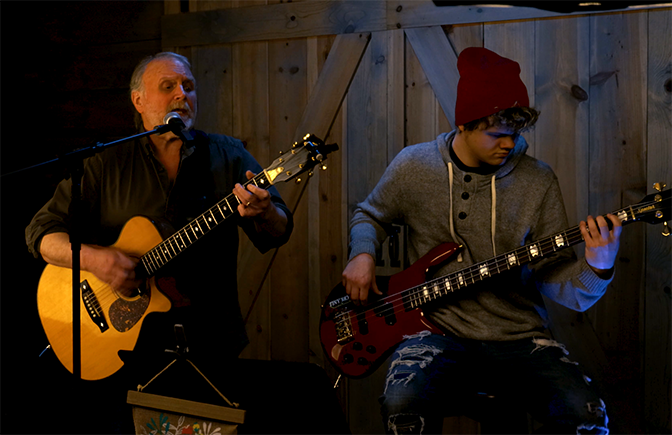
The Joliet area in the late 60’s and early 70’s had an abundance of great musicians and venues. At Joliet West high school I was able to play with Pete Labella who became the concertmaster at the Chicago Lyric Opera. Pete was incredible pianist and violinist who I learned some intensive practice lessons from. We had a jazz combo with Steve Rodby who played the upright bass and has been working regularly with Pat Metheny for decades. The jazz drummer Dave Ivnik became a wonderful friend that I met when I answered his ad in the paper for guitarist in a working wedding band. This wedding band was a great job in high school. Dave at his heart was a jazzer. He would wear t-shirts he had made that said “Jazz Is Eminently Superior” just to get people going.
I attended the Jamey Aebersold Jazz clinics before my Junior year in high school. That’s where I was extremely lucky to study with Mick Goodrick, Gary Burton and Pat Methney. Pat was actually a student there the first week and my instructor the next. Those three teachers shined the lights and pointed to the paths that speed up understanding and developing chops. Mick was the most inspirational. At one of our lessons he saw that I was dejected about how amazing Pat Metheny was. He said to me “ Don’t let boy wonder get you down. Just keep at it.” We wrote letters to each other during the year. Gary Burton also said “If you try to make it in the music world and you fail, at least you can be settled with yourself that you tried. I guess if you don’t try, you’ll never know”. And circling back to my Dad, he did say in early college to me, “Well if you are going to be in music, be the best you can be”. It’s amazing what a few strategic sentences can do for your life.

Collaboration appears to be central in the recent release “Jasko’ Filisko & Ortega: Friendship”. Can you discuss this process, how this was achieved in the time of Covid, and how it created the platform and voice of your new album?
I met Joe at Joliet Junior College in 1984 as a guitar student and he has been a dear, encouraging and steadfast friend since. Joe played in the Joliet Junior College “Wolfpack Guitar Ensemble”. We did lots of shows and tours. (there’s 30 mostly silly videos on YouTube, see one below) Joe switched to harmonica because he was tired of schlepping backbreaking amps. His decision blossomed into an effervescent new world for him. Joe and I went on to become partners in Jasko’s High Heaven, my first recording studio that we built together and co-invested in recording equipment and instruments. This studio endeavor was also the seeds of the DARA program at USF. Joe was amazing at anything he attempted to learn. So I began writing instrumental music that incorporated the harmonica that was very challenging. We were then on a quest to make the best sounding recordings we could with acoustic guitar, harmonica and bass. Larry Ortega is a drummer, percussionist extraordinaire, music composer/ programmer and has been a life-long nutty friend since 1979. He also played in Wolfpack. Larry is now still only playing drums as his livelihood, and he is very busy. I love the drums and percussion and that was the missing from the project.
I had booked Larry in December of 2019 for March 11-13, 2020 to record drums and percussion. When Larry came in March all was good, then the calls started coming. All his gigs for the rest of the month and April cancelled. The next day took out May, June, July and August of 2020, the 1st year of Covid. Larry said, “I guess we have more time to record.” I said, “Yes!!!” The lemons turned into lemonade, a scrumptious and delightful work of art. Larry blessed this recording with unbelievable performances with the strength and elegance of Shadowfax, driving creative, responsive, rhythmic energy and nuance making it a listening pleasure every time. The lifetime of revering and emanating the groove flourished into swashbuckling risk and harnessed brilliance in creating musical jewels of drumming and percussive genius with the nuance of a gem maker. It was an honor and a joy to work on this project with a giant in the rhythm and creative music world.
http://www.thecompmagazine.com/wp-content/uploads/2022/01/IMG_2622.mov
When listening to Jasko’ Filisko & Ortega: Friendship”, I am reminded of rhythmic progressions and spirited sounds that surfaced in the music of musicians like Cat Stevens and other 1970s acoustic-based practitioners. Where do you see yourself drawing inspiration from?
I initially loved Santana with all his percussion. Then as I got more into jazz I fell in love with Afro-Cuban music with their percussion ensembles which I am still very much drawn to. Pat Metheny also had great percussionists on many of his projects. I always was pulled to responsive jazz and fusion drummers very actively responding to the music. I loved that as a listener and as a player. Larry Ortega is the king of listening and responding in real time, which makes playing with him exhilarating. When I wrote this music I always thought, “What would Larry do with this?
As I spoke of earlier, Larry is the essence of Revere The Groove, which is my logo. So what does that mean? Do ever see what what happens when children hear music? They immediately start moving.
I guess I never grew up. I always start moving when I hear music. Moving with music is primal, organic and at the essence of who we are as humans. There are some rare people that are not affected this way by music, (like our current dean and she would admit it) but the lion’s share do move and to me it is a magical and awesome phenomenon.
Another element I always loved are rich extended harmonies in music, which are ripe in jazz and other styles these days like flamenco, fusion, and even in much of the newer rock and hip-hop and R&B. I love great chord progressions.
And I always shot for memorable melodies, mostly melodies that can be sung. All the melodies, though they are instrumental, came from me singing them first. I believe creating melodies by singing them gives the melody more power, gravity and appeal.
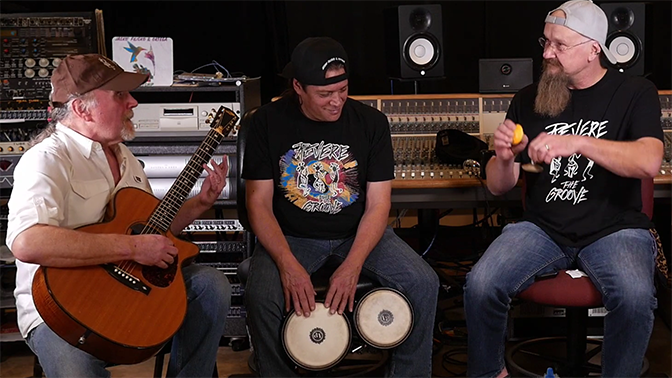
Music, like many arts today are fairly ‘pluralist’, they draw from a variety of sources. Today, I see musicians using elements from an array of genres (e.g., jazz, classic rock, synth, flamenco, etc.). When asked by someone unfamiliar with your music, how do you describe it to them?
I describe our music as thrashing acoustic. In fact that’s the name of my publishing company with ASCAP Thrashing Acoustic Music. Lots of energy, dynamics, emotions, grooves, and wonder. One fan called it World Music and Jazz Fusion with flourishes of Blues licks. That works too!
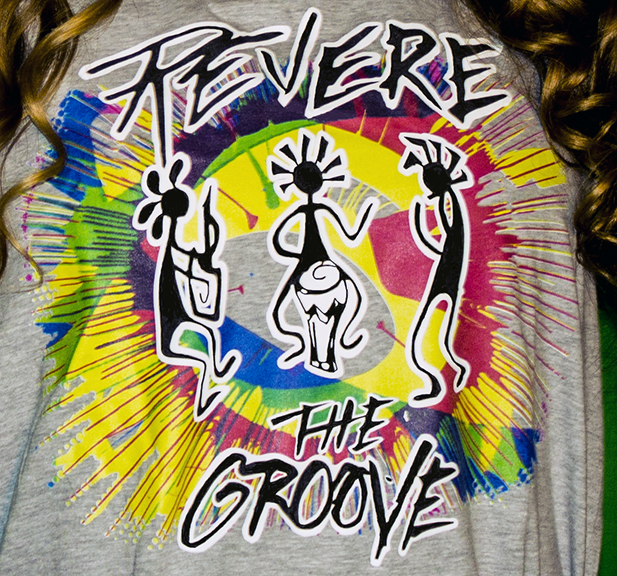
The album feels fully realised. I am most drawn to ‘Goin’ To Philadelphia’. Can you discuss the making of this song? What was the impetus? What do you hope the listener takes from this experience?
“Going to Philadelphia” is a song of exuberance about going to pick up the custom made guitars that we used on this album by John Zeidler, the master craftsman we met through Joe’s friend Wade who lived in Philadelphia. “Going to Philadelphia” was about the excitement of a creation, a beautiful thing, very rare and wonderful. Being with Joe to actually get these guitars was also wondrous.
The song in many ways is a feature of the bass, a duet between the melody that the guitar and the harmonica play together and the bass response. The guitar is featured more in the middle section.
We also had the honor of playing one of my good friend Kevin Comfort’s cajons that he builds, called the Comfort Cajons. They are smaller ones, built to be portable, which you can connect a strap on and play. We used the cajon for the sixteenth note pattern throughout the song. It’s a super fast part to keep the momentum of being on a road trip, the movement of the vehicle towards Philadelphia. It created a nice contrast with our melody. We also used a tambourine I made from three tambourines, one of the tambourines I got at Green Lake came from India. I duck taped it together with a couple tambourines that I owned, kind of gluing them together to create one tambourine sound.
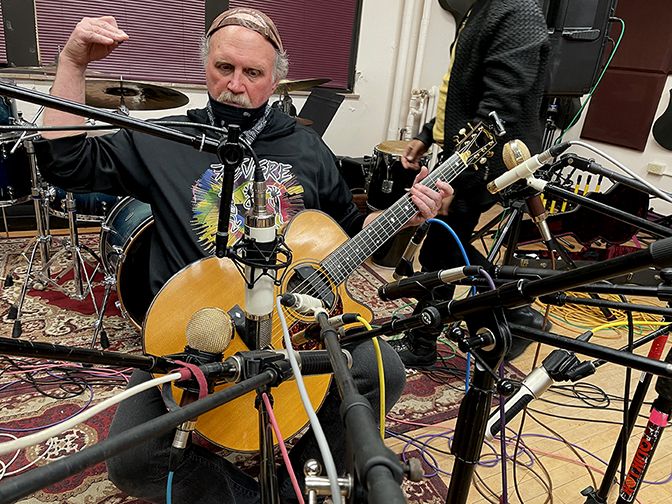
In the middle section I was drawn to the 7/4 time signature for that section. We had the cajon and tambourines play this fast 7 pattern TaKa TaKa TaKeTa (Say this quickly and you have 7). I learned this way of representing 7 from a Don Ellis clinic, a jazz trumpeter who was famous for writing in odd meters. He spoke of how the musicians of India represented odd meters phonically. I also wanted to have a Gipsy Kings like sound in this section. The Gipsy Kings handclaps mimicked the TaKa TaKa TaKeTa pattern. Then Larry also did the upbeats handclaps at a pretty brutal speed. There were lots of layers of handclaps doing that pattern, a testament to the brilliance of Larry.
The featured guitar in the middle section really brought out the beauty of that guitar. I was really thrashing on that section. It was a duet with the percussion with the bass beautifully filling the bottom and the harp doing an obbligato over the top leading us back into the melody.
I wanted the harp sound to be like a concertina, a Cajun like accordion sound. It sounded great with the arrangement. Joe once again did a great job locking in with me playing the melody and playing the harmonica in octaves. To increase the energy at the end of the song, I couldn’t resist adding the B-3 organ part in there and eventually have it join in on the 16th notes to make the picture that we had arrived at our destination, John Zeidler’s home.
We had been there before to order the guitars. It was super exciting to be able to pick them up. What a great trip and what great instruments. It was a truly sad moment when John passed away from leukemia at the age of 44. He made a handful of guitars, mandolins and he also made cellos. He was definitely a master luthier and as you can hear by the quality of those guitars sounds. You can see why we were excited to actually own them. I always wanted to do them justice. It was truly an honor to play these guitars on this album. So “Going to Philadelphia” is a song of thankful exuberance and tribute to a sensei.
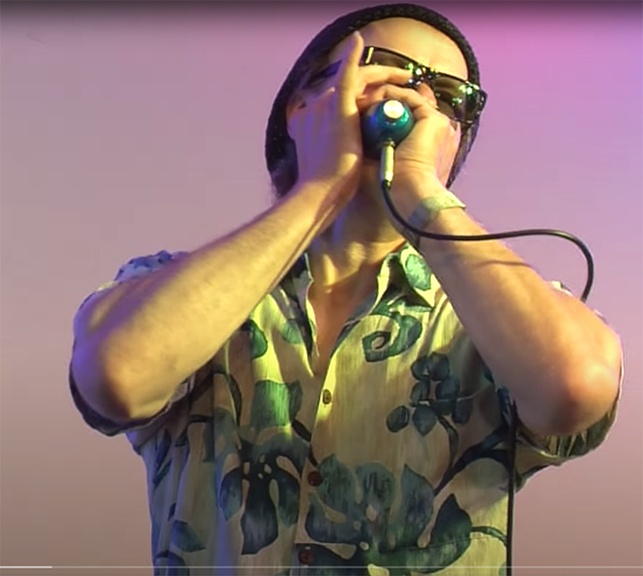
In addition to being a musician, you teach. Can you share what are constant items you regularly share with your students?
One has to be bitten to be in the music industry in this current age. One has to be open to multiple streams of income in the music world.
(I’m actually creating a new company called bittenmusic.com, which is a Digital Streaming Provider that focuses on getting dollars instead of micro-cents to independent musical artists. This could be the focus of another article)
Write great songs, songs you’ll still like in a decade or two
Always strive for excellence in your craft, in your compositions and in all you do
Grow your tribe i.e. focus on your fans
Collaborate and find like-minded collectives of people to work with
Troubleshooting is the world of an audio engineer
What should be and what is, don’t always square
Dream big, be willing to be the lone dancer on the hill
(I don’t always say this, but I try to honor and respect another’s personhood when we are together wrestling and striving for the above goals)
What’s the plan for 2022? Do have specific items (performances, recordings) in process?I’m mostly doing social media promotional experiments of the CD. On Facebook, I’m making 15-20 second videos with a couple sentence reviews coupled with music from the album. I’m getting some inspiring and heart-warming responses to use as source material. Take a look. I just started doing this. https://www.facebook.com/jaskofiliskoortega
I’m also working with the Bandcamp affiliate system with similar artists to get into their listener pools.
On the performance front, no concerts for a number of reasons; it would take at least five players to do the music justice, harmonica player, a guitarist, a bassist, a drummer and a percussionist at least; the music is very difficult; Larry and Joe are busy with other performance engagements; I’m here at USF as the director of the Digital Audio Recording Arts program and I’m currently retooling my own recording studio where the project was recorded for the next wave of work starting this summer.
For additional information on Jeff Jaskowiak and the items discussed, please visit:
Jasko Music Bandcamp – https://jaskomusic.bandcamp.com/releases
Jasko Music – https://jaskomusic.com
Jasko Filisko Ortega – https://www.facebook.com/jaskofiliskoortega
Mick Goodrick – https://en.wikipedia.org/wiki/Mick_Goodrick
Gary Burton – https://en.wikipedia.org/wiki/Gary_Burton
Pat Metheny – https://www.patmetheny.com/
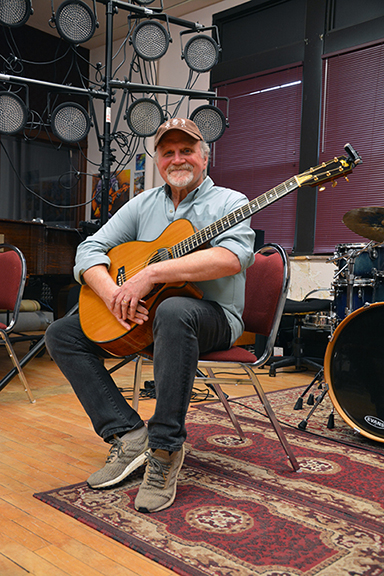
Joliet, Illinois, 2021,
Interview and portrait by Chester Alamo-Costello


